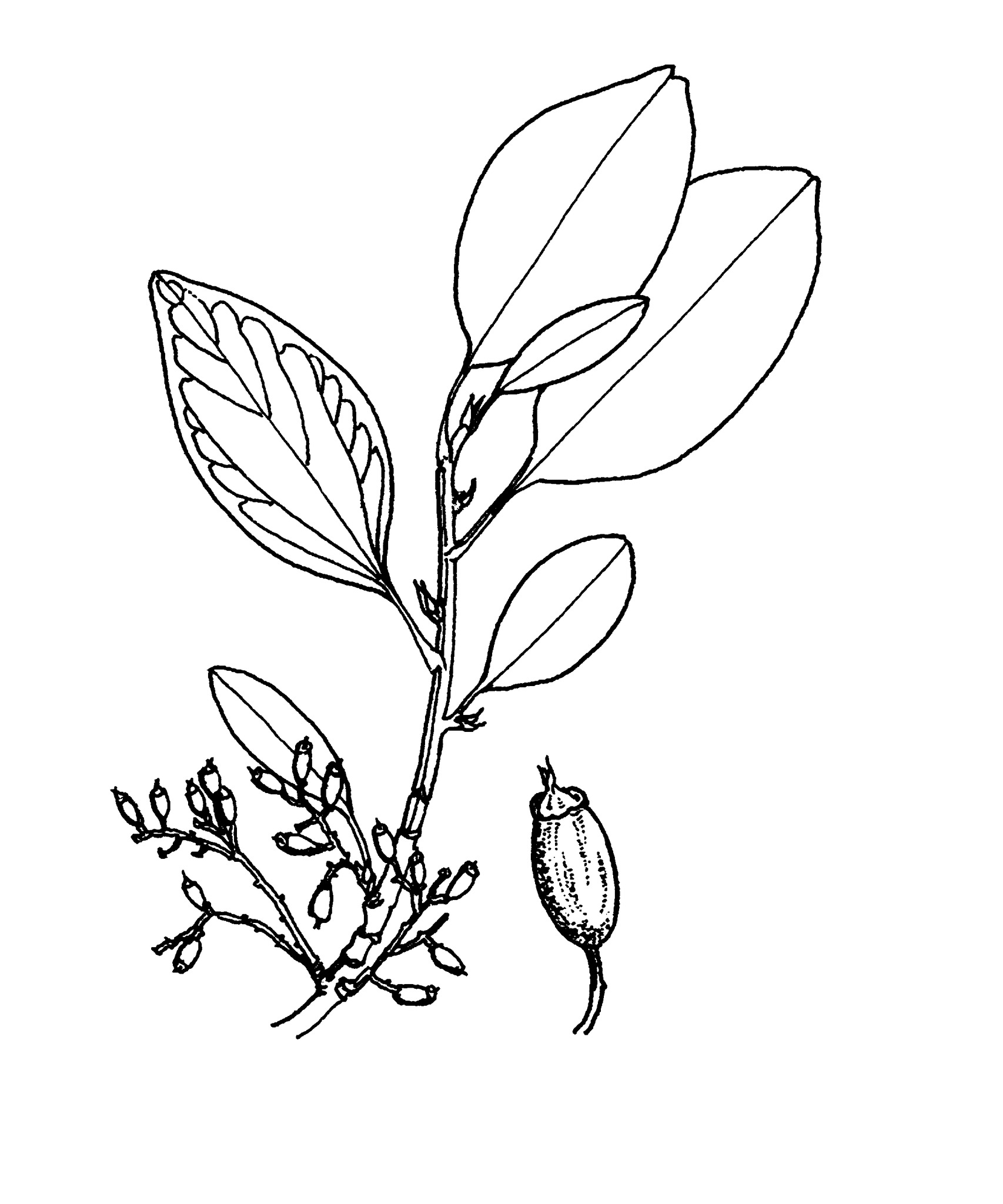
Trees or shrubs or lianas, evergreen. Leaves alternate, spiral, thick and leathery, simple, entire, dentate or spinose, the leaf bases dilated and subsheathing; stipules absent. Inflorescences axillary racemes or panicles. Flowers unisexual and plants dioecious, regular; hypanthium campanulate; sepals 5, united, caducous in female pistillate flowers; petals present (caducous when present in pistillate flowers) or commonly absent in female flowers, 5, free, imbricate. Stamens 5; anthers dehiscing by longitudinal slits. Ovary inferior, of 3 fused carpels, 2-locular (only 1 locule ovuliferous); ovule 1, placentation axile; stigma single; styles 3. Fruit a drupe or berry, 1-seeded
For uses see genus.
Griseliniaceae can be recognised by their thick leaves with broad bases that are subsheathing; the leaf margins are entire to strongly spinose; unisexual flowers and plants dioecious, petals imbricate, ovary inferior.
1 genus and 7 species, with a trans-Pacific distributio between southern South America (5 spp.) and New Zealand (2 spp).
The family Griseliniaceae has in the past been placed in the Cornaceae. This treatment follows Stevens, P.F. (2018, Angiosperm Phylogeny Website).
Created by: Val Stajsic
Updated by: Val Stajsic, March 2018
